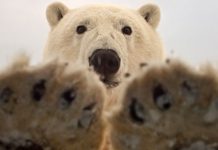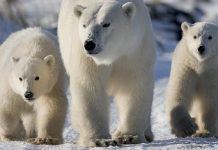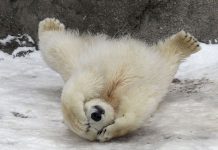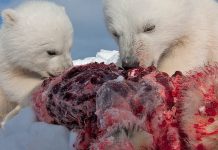While polar bears are highly aggressive and live a solitary life-style they are not territorial like brown bears. Brown bears actively defend their territories but arctic bears do not seem to care for it because the range is so expansive and limitless. Besides, polar bears must migrate as the season changes to follow food. As it turns out the arctic predators rely on climate but brown bears do not. You want to know about polar bear life history?
Polar Bear Life History
People usually believe that polar bears are voracious predators; they eat and attack just about anything. That is not quite true for polar bears typically avoid fight not only with their counterparts but also with humans except in extreme situations. They will prefer to run away rather than to stay and resist. If a bear is not hungry she might not attack humans. Nonetheless the polar bear’s history suggests that they do attack and sometimes eat humans when they feel like threatened or starving.
Polar bears are known for their surprise attacks and the victims (including humans) might not notice the bear’s presence. They are stealth predators. A male polar bear attacked the Japanese photographer, Michio Hoshino in the northern Alaska and the photographer could manage to get to his truck. The bear ran hard and it tore the truck’s door but Hoshino was able to drive the truck.
Polar Bear Harvest History
Polar bears have long been the primary source of meat and other raw materials for indigenous people. Natives had used polar bear’s hides and skin to meet their own needs such as for making parka ruffs, pants, and jackets of a dense bear’s fur. Before 1950s only indigenous people hunted ice bears but (not many) professional hunters ever had a shot. However shooting bears had become a popular sport especially after 1960s.
As it turned out five nations; Denmark (Greenland), United States (Alaska), Canada, Russia, and Norway (Svalbard) signed an agreement Polar Bear Specialist Group (PBSG) under the terms of the International Union for the Conservation of Nature (IUCN). The agreement insists on giving maximum protection to polar bears. It also calls for the cooperative measures to be taken by all five nations including the requirement to recognize the immediate need for conservation practices.














